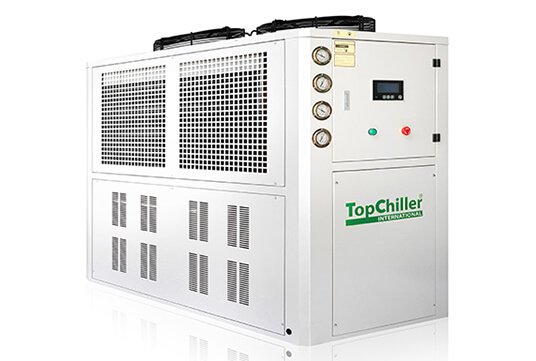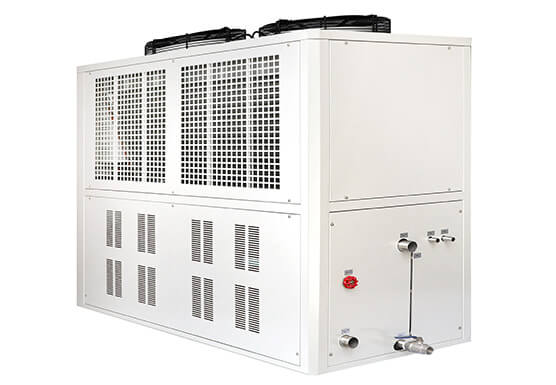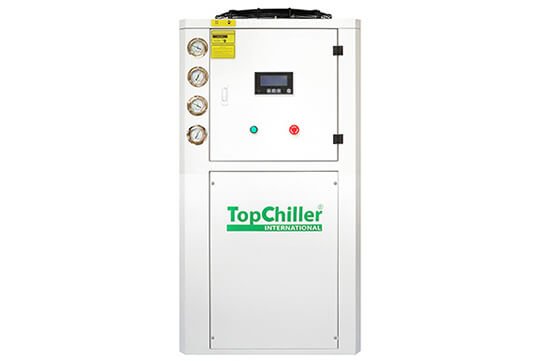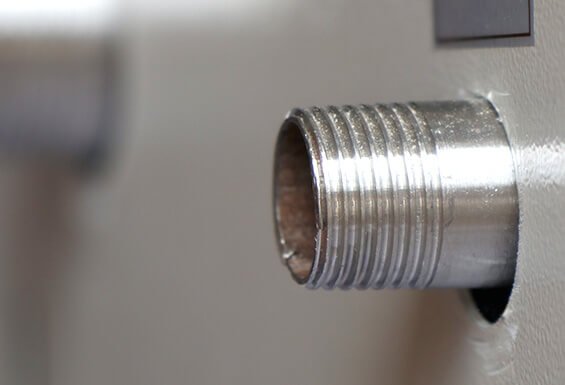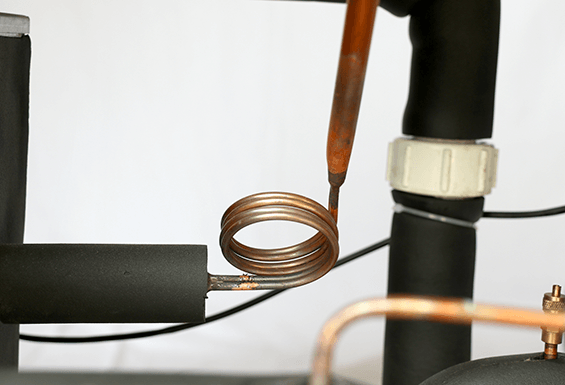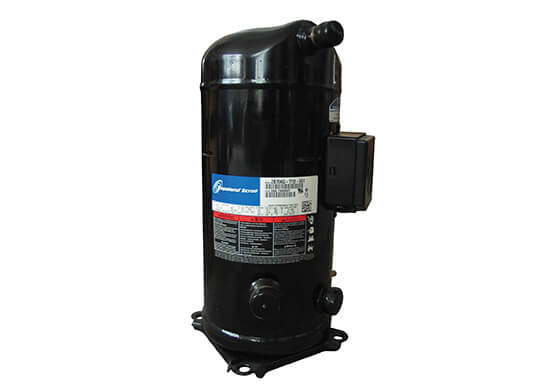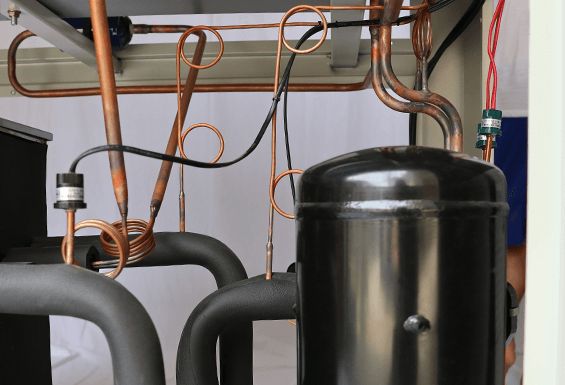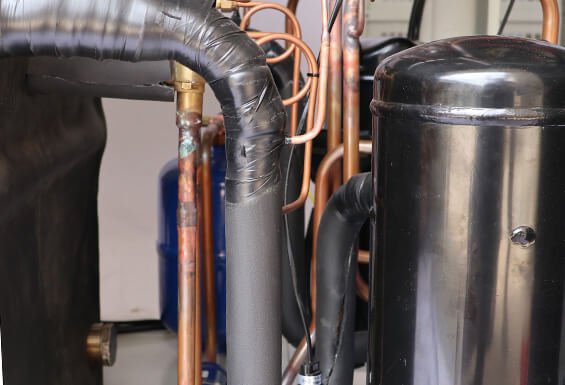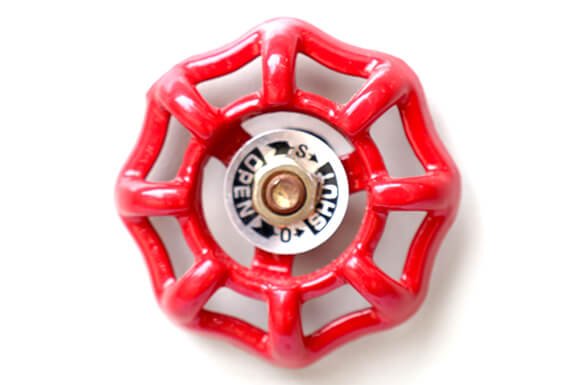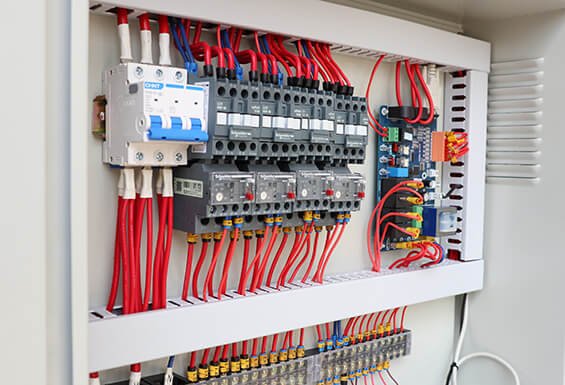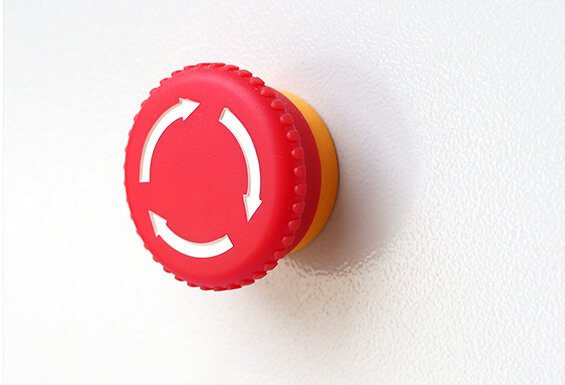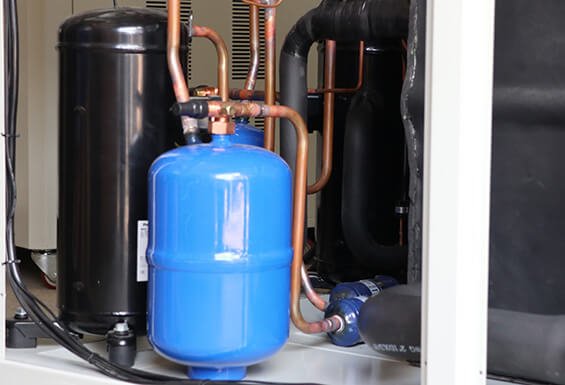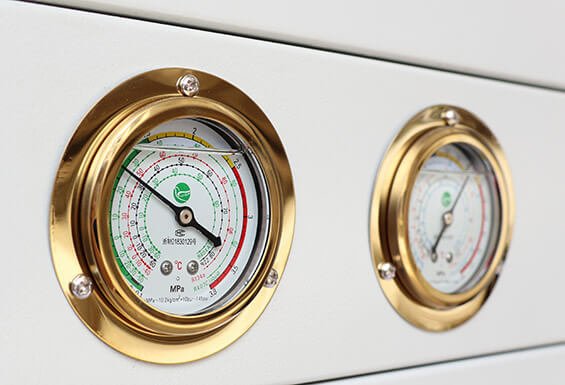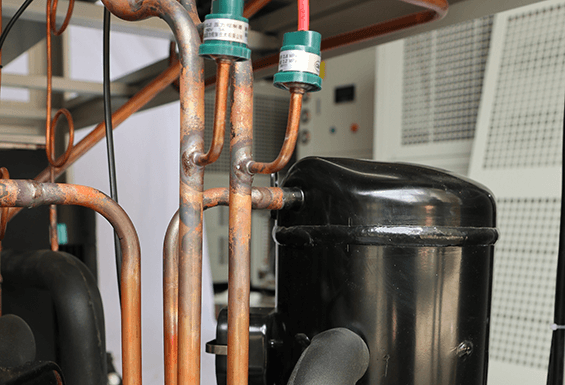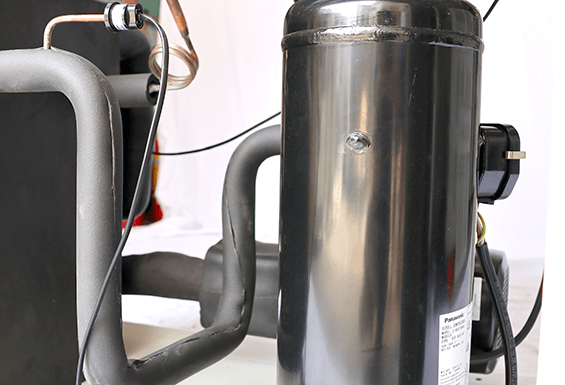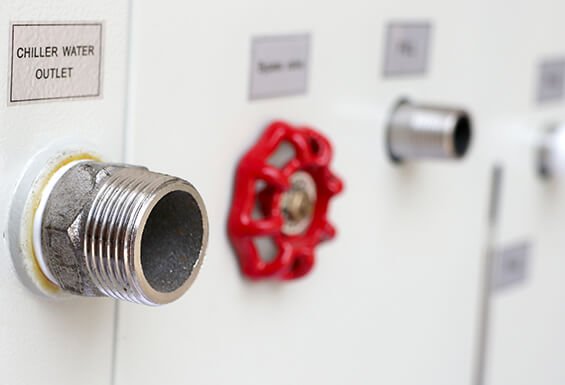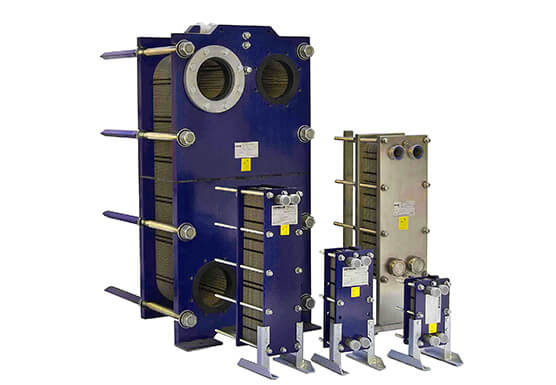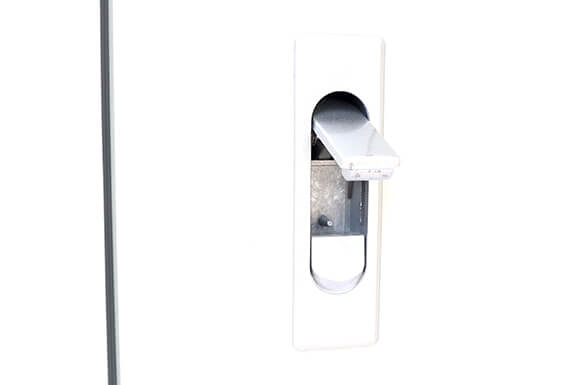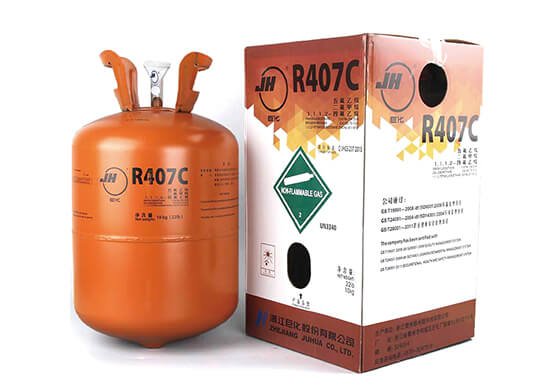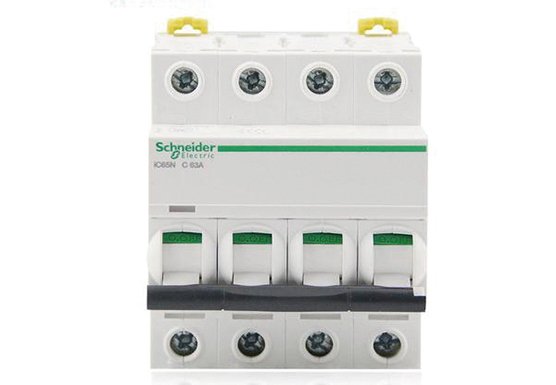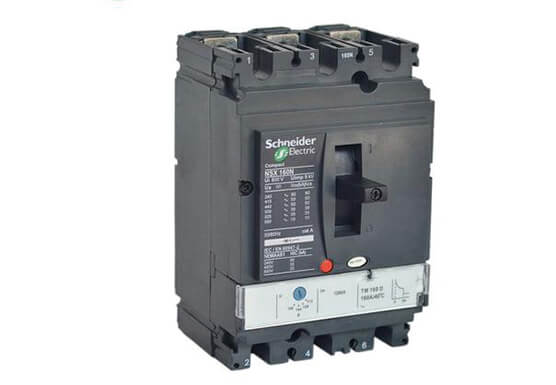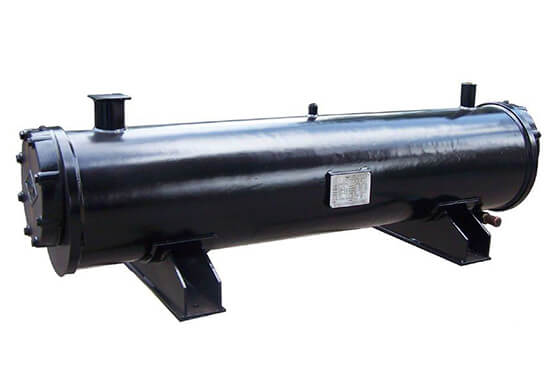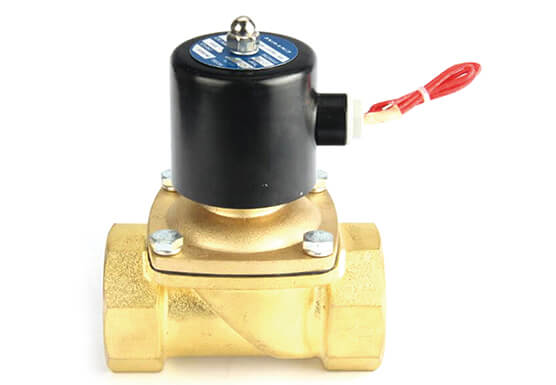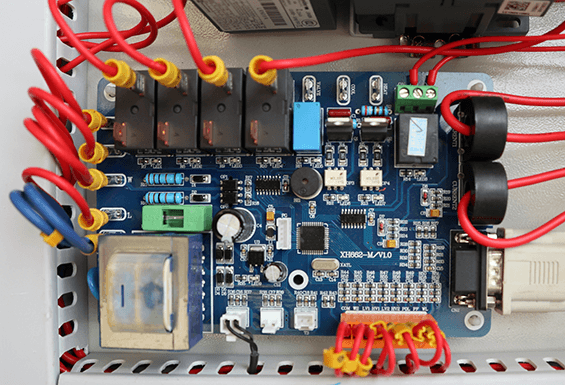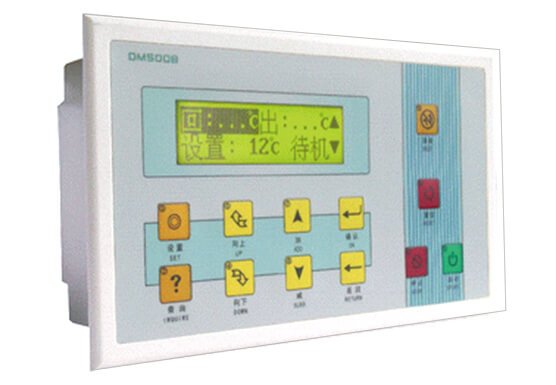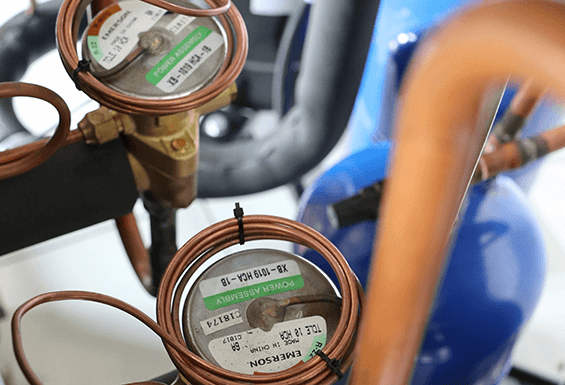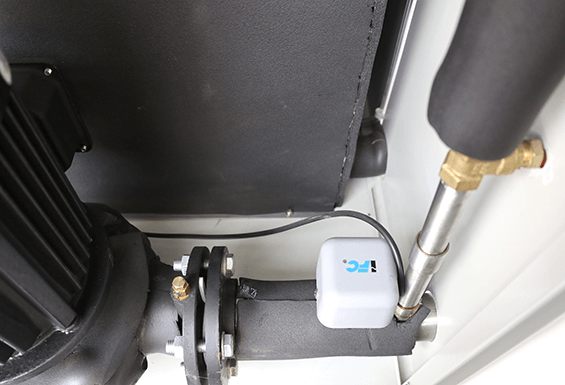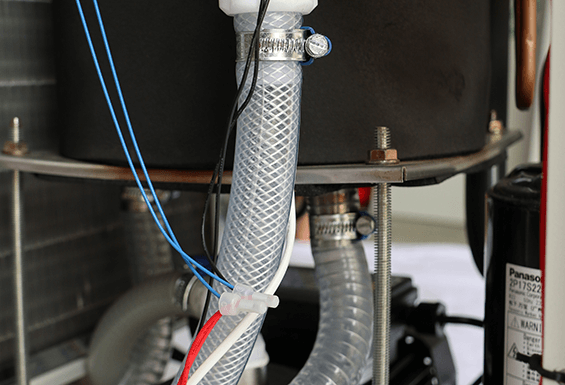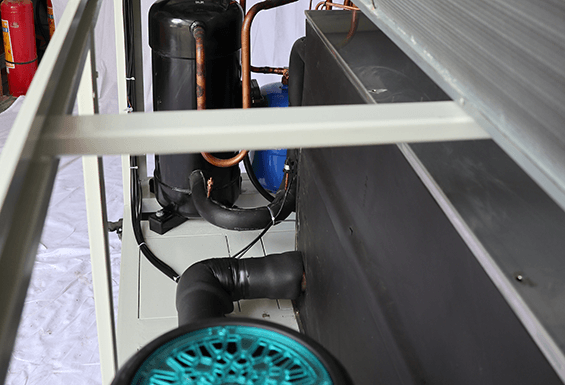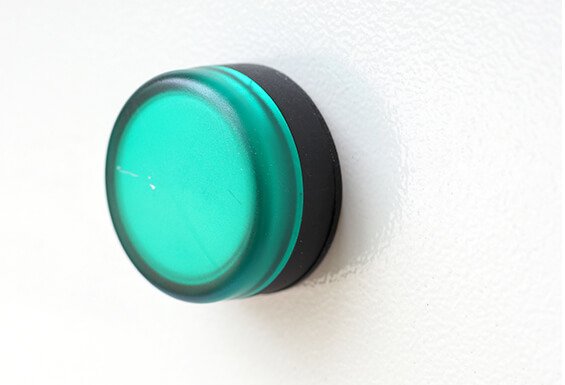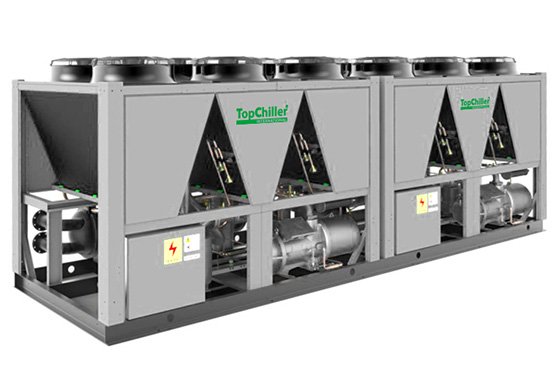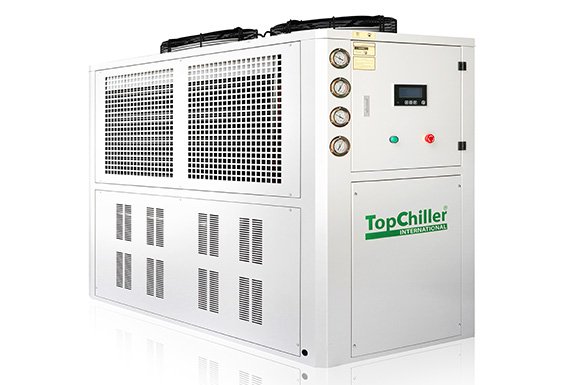TopChiller can design and manufacture all types of welder chillers for you
- Cooling capacity ranges from 1 ton to 30 ton
- Temperature control ranges from 65°F to 85°F
- Reliable & energy-efficient scroll compressor
- O3friendly refrigerant & nonferrous piping
- Brazed plate heat exchanger & condenser
- Stainless steel water pump & water tank
- Microprocessor temperature controller
- Compact design & lower maintenance cost
Your Premier Welder Chiller Manufacturer and Supplier Over 20 Years
A Welder Chiller is a cooling device that is used to dissipate heat from welding machines by using chilled water or air circulation around the condenser preventing alteration of welding products.
TopChiller is one of the world’s largest companies in China working steadily for over the last twenty years as a manufacturer and supplier of Welder Chiller customizing clients’ requirements.
TopChiller has earned a name of fame on the map of the global world by supplying a full stock of variant sizes and featuring Welder Chiller models to the whole world marketplace.
Welder Chiller constitutes different branded components as scroll compressor, water pump, water tank, air/water-cooled condenser, microprocessor temperature controller, protecting devices, brazed plate heat exchanger, protecting devices, and nonferrous pipelines.
TopChiller manufactured Welder Chiller is renowned at the industrial level for its large number of benefits as given below:
- The Welder Chiller is equipped with cooling water circulation ensuring the elimination of heat from welding machines produce during the welding process.
- TopChiller designed Welder Chiller is installed with ozone-free refrigerant as a coolant that makes consistent cooling by smooth flow without affecting the ozone layer and protection from global warming.
- During the welding, process heat is released that depends on the current supply. If the current flow will be high, heating damage will be high. Welder Chiller control system regulates current flow and temperature of welding machine preventing heat damages to machine and welding products.
- Heating is required for welding metals and wires but in average amount assured by microprocessor temperature controller of Welder Chiller maintaining temperature and heating for welding at set point.
- Nonferrous water circulation in tubing and coils prevents the entrance of dust and debris ensuring fluent water circulation without any obstruction.
- Welder Chiller is configured with a compact, rugged design enabling the unit easy installation even for small space occupying applications.
Welder Chiller has its outstanding uses for different applications as given below:
Agitators, industrial laser, industrial welding like spot welding, and TIG welding, applicator pans, induction welder, blenders, seam welder, chill rolls, coating rolls, driers, etc.
Are you planning to buy an optimal and highly efficient Welder Chiller for your application?
Are you searching for a worldwide and trustworthy company manufacturing reliable and long serviced life Welder Chiller to build up your business?
TopChiller is the most appreciated company to rely on. Just visit the company or make contact with TopChiller employees and competent experts to get a quote and technical help for buying Welder Chiller.
Our team is bound to satisfy clients by determining application load requirements and help to select the best-suited Welder Chiller for your application at smart prices.
General Description:
A Welder Chiller is a specialized process chiller used for dealing with the excessive heat produced in a welding process. Its capacity and size can be variable according to the cooling load.
TopChiller has come up with unique and innovative designs of the Welder Chiller with smooth working and an advanced central microprocessor unit. Along with the essential components like the compressor, evaporator, condenser, and expansion valve, some optional accessories also help maximize the productivity of an application. These include VFDs and filter driers etc.
With an extensive range of applications, Welder Chiller manufactured by TopChiller is useful in laser welding, mechanical industries, induction welder, seam welder, chill rolls, coating rolls, anodizing processes, etc.
TopChiller is one of the world’s famous brands in China, working steadily for over the last twenty years as a manufacturer and supplier of Welder Chiller. Each model comes with unique features useful for each kind of application.
If you are searching for a trustworthy brand manufacturing durable Welder Chiller to build up your business. TopChiller shall be your priority.
Contact us; our professional customer service is ready to satisfy you by determining application load requirements and helping you to select the best-suited Welder Chiller for your application.
TopChiller can satisfy your welding industry needs by providing you a customized Welder Chiller according to your industrial need.
Features and Advantages:
Following are the excellent features and advantages of a Welder Chiller:
- Welder Chiller comes with a built-in stainless steel water tank with laminated walls with anti-corrosive properties. A built-in high-pressure pump is also available. It helps in keeping the water quality high and precise.
- The water circulation unit is nonferrous, making it more stable and sturdy against the minerals and other contaminants in the water. This is important for the maintenance of the duct system.
- The PID temperature controller can control the temperature in a precise range, such as 5℃ to 25℃. The temperature stability is around ±0.5℃ to±2℃. This feature helps for accurate results.
- It only supports the high quality, ozone friendly, and refrigerant that negatively affects the environment. The chances of leakage are also minimal, ensuring the chiller’s safe use.
- Welder Chiller comes with highly innovative sensitive alarms that detect changes in water level, refrigerant level, and oil level to help maintain these quantities within a narrow range. This feature is vital for overall maintenance.
- Data Sheet
- Image Gallery
- Main Parts
- Video
| Welder Chiller Technical Specifications | ||||||||||||||
| Items Model | AC-0.5A | AC-1A | AC-1.5A | AC-2A | AC-2.5A | AC-3A | AC-4A | AC-5A | AC-6A | AC-8AD | AC-10AD | AC-12AD | AC-15AD | |
| Cooling capacity | Kcal/h 50HZ/60HZ | 1419 | 2451 | 3182 | 4833 | 5848 | 7181 | 9288 | 11988 | 14534 | 18576 | 23994 | 29068 | 38270 |
| 1703 | 2941 | 3784 | 5800 | 7018 | 8617 | 11146 | 14386 | 17441 | 22291 | 28793 | 34882 | 45924 | ||
| KW 50HZ/60HZ | 1.65 | 2.85 | 3.7 | 5.62 | 6.8 | 8.35 | 10.8 | 13.94 | 16.9 | 21.6 | 27.9 | 33.8 | 44.5 | |
| 1.98 | 3.42 | 4.4 | 6.74 | 8.2 | 10.02 | 12.96 | 16.73 | 20.28 | 25.92 | 33.48 | 40.56 | 53.4 | ||
| Input power | KW | 0.88 | 1.35 | 2 | 2.25 | 2.66 | 3.27 | 4.07 | 5.75 | 6.45 | 8.25 | 11.5 | 12.9 | 17.45 |
| Max Current | A | 5.4 | 8.2 | 12 | 13.6 | 6.6 | 8.2 | 10.1 | 13.8 | 15.5 | 20 | 27.9 | 31.3 | 42.4 |
| Power source | 1PH~220V/3PH~220V/380V 50HZ/60HZ | 3PH~380V/415V/480V~50HZ/60HZ(3PH~200V/220V 50HZ/60HZ) | ||||||||||||
| Refrigerant | Type | R22/R407C/134a/404A/410A | ||||||||||||
| Control | Capillary / thermostatic expansion valve | |||||||||||||
| Compressor | Type | Hermetic Rotary | Hermetic scroll ( piston ) | |||||||||||
| Power(KW) | 0.45 | 0.89 | 1.3 | 1.73 | 2.1 | 2.7 | 3.5 | 4.55 | 5.25 | 3.5×2 | 4.55×2 | 5.25×2 | 7×2 | |
| Condenser | Type | Efficient finned copper tube with aluminum+low noise external rotor fan | ||||||||||||
| Air flow (m3/h) | 750 | 1000 | 1500 | 2000 | 2500 | 3000 | 4000 | 5000 | 6000 | 8000 | 10000 | 12000 | 15000 | |
| Air blower(KW) | 0.06 | 0.09 | 0.15 | 0.15 | 0.19 | 0.14×2 | 0.14×2 | 0.19×2 | 0.19×2 | 0.25×2 | 0.45×2 | 0.45×2 | 0.6×2 | |
| Evaporator | Type | SS Tank coil / shell and tube type / Plate type heat exchanger | ||||||||||||
| Chilled water (m3/h) | 0.28 | 0.49 | 0.64 | 0.97 | 1.12 | 1.44 | 1.86 | 2.4 | 2.91 | 3.71 | 4.8 | 5.81 | 7.65 | |
| 0.34 | 0.59 | 0.76 | 1.16 | 1.4 | 1.72 | 2.23 | 2.88 | 3.49 | 4.46 | 5.76 | 7 | 9.18 | ||
| Water tank(L) | 10.6 | 18.3 | 27 | 27 | 50 | 50 | 60 | 60 | 110 | 120 | 200 | 200 | 270 | |
| Inlet/outlet pipe (inch) i | 1/2″ | 1/2″ | 1/2″ | 1/2″ | 1″ | 1″ | 1″ | 1″ | 1″ | 1-1/2″ | 2″ | 2″ | 2″ | |
| Water pump | Power (kw) | 0.37 | 0.37 | 0.37 | 0.37 | 0.37 | 0.37 | 0.37 | 0.75 | 0.75 | 0.75 | 1.5 | 1.5 | 2.2 |
| Max lift(m) | 22 | 22 | 22 | 22 | 22 | 22 | 22 | 30 | 30 | 25 | 25 | 25 | 28 | |
| Max flow (m3) | 5.4 | 5.4 | 5.4 | 5.4 | 5.4 | 5.4 | 5.4 | 8.1 | 8.1 | 8.1 | 13.5 | 13.5 | 25.2 | |
| Safety protection | Compressor inner protection, over current protection, high/low pressure protection, over temperature protection, flow rate protection, phase sequence/phase missing protection, low level coolant protection, anti freezing protection, exhaust overheat protection | |||||||||||||
| Dimension | L(mm) | 550 | 550 | 600 | 600 | 720 | 980 | 980 | 1150 | 1150 | 1350 | 1500 | 1500 | 1860 |
| W(mm) | 350 | 450 | 500 | 500 | 550 | 520 | 520 | 560 | 560 | 680 | 760 | 760 | 850 | |
| H(mm) | 695 | 845 | 985 | 985 | 1350 | 1170 | 1170 | 1215 | 1215 | 1530 | 1660 | 1660 | 1900 | |
| Net weight(KG) | 45 | 62 | 85 | 95 | 125 | 152 | 175 | 185 | 215 | 283 | 345 | 382 | 580 | |
| Note: The above specifications are according to the following design conditions: 1, 12℃/7℃.Chilled water inlet/outlet temperature 12℃/7℃. 2, 33℃/38℃.Cooling air inlet/outlet temperature 33℃/38℃. We reserve the right to modify the specification without further notice. | ||||||||||||||
Why TopChiller is Your Reliable Welder Chiller Manufacturer and Supplier In China?
Welder Chiller-An Ultimate FAQ Guide by TopChiller.
- What is a Welder Chiller?
- What are the Basic Features of a Welder Chiller?
- What are the Necessary Components of a Welder Chiller?
- What is the Working Principle of a Welder Chiller?
- What is the Purpose of Using a Welder Chiller in the Welding Process?
- Which Industrial Processes Require a Welder Chiller?
- What are the Protective Measures of a Welder Chiller in the Winter Season?
- What is the Temperature Protection Mechanism of a Welder Chiller?
- What are the Industrial Applications of a Welder Chiller?
- What is the Difference Between an Air Cooled and a Water Cooled Welder Chiller?
- What are the Excellent Advantages of a Welder Chiller for your Industry?
- Which Welding Processes Need a Welder Chiller to Remove Extra Heat?
- What are the Types of Compressors Used for a Welder Chiller?
- What is the Capacity of a Welder Chiller?
- What are the Accessories Used for a Welder Chiller?
- What are the Safety Requirements of your Welder Chiller?
- How to Increase the Efficiency of your Welder Chiller by Maintenance?
- How to Troubleshoot Problems of your Welder Chiller?
What is a Welder Chiller?
A Welder Chiller is an industrial process chiller dealing with heat displacement from the exothermic welding process and equipment. The leading cooling agent is chilled water, and the objective is to avoid the heating up of SCRs.
It is specifically designed to lower and maintain the temperature and pressure that tends to rise up in the welding process.
Made up of highly resistant 304 stainless steel, it comes with outstanding reliability and durability. The appropriate temperature and maximum working for good quality welding can only be achieved through precise temperature regulation.
A closed-loop Welder Chiller is preferred because of low maintenance and operation and better thermoregulation.

Prime Quality Welder Chiller Designed by TopChiller
What are the Basic Features of a Welder Chiller?
A Welder Chiller comes with the following unique features:
- The temperature controlling range is 5 ℃ to 30 ℃. You can adjust and control the temperature of ± 1 degrees Celsius accurately with the help of a digital display controller.
- The water tank is composed of stainless steel, which resists contamination from bacteria, algae, and minerals from untreated water. Thus you can store water for a long time without treating the water.
- It has a sophisticated design with easy assembly. This feature enables you to install and disassemble it quickly to transport it from one place to another.
- The supreme quality compressors have a built-in protection system which helps in enhanced efficiency and long life of the chiller.
- Due to design details and good lubrication, there is no noise and vibration during the operation.
- It consumes less power and therefore has a budget-friendly operation. The highest quality water pump is utilized in compelling the water through the system.
- The maintenance requirement is low and shows an energy-efficient function that lowers your water and electricity bills.
- The microprocessor core incorporates advanced technology for precise control.
- You can also control the chiller from a remote area through the remote control facility.
- You can get the features customized or add additional accessories for enhanced productivity.
What are the Necessary Components of a Welder Chiller?
The necessary components of a Welder Chiller are listed below:
Compressor
Situated between the evaporator and the condenser, it deals with compression of the refrigerant so that the intermolecular spaces decrease, increasing the pressure and reducing the volume.
A high-power electric motor can also be used to provide the driving force.
Condenser
It is responsible for the conversion of vapors into the liquid state. It is located after the compressor and before the expansion valve.
The two main types of condenser fan include a water-cooled and an air-cooled type.
Evaporator
It works by vaporizing the refrigerant. This process takes the heat from the welding process and incorporating it into the evaporation, so the particles gain energy and break free from the rest of the refrigerant.
It has a large surface area for more exposure of the upper surface particles as they gain energy and vaporize.
Expansion Valve
Rapid temperature reduction and volume increase are obtained by allowing the refrigerant to expand in the expansion valve. This process again absorbs a significant amount of heat.
Water Tank
It can be directly mounted to either the evaporator or condenser. The purpose is to obtain a separate inlet and outlet for water flow. It helps in better circulation and thermoregulation.
Microprocessor Central Unit
Equipped with the recent technology and touchscreen, it enables you to adjust the required values to achieve the required temperature. It comes with built-in memory and a thermostat for better temperature control.
The direct control of the alarm system and the memory is also in the central microprocessor.
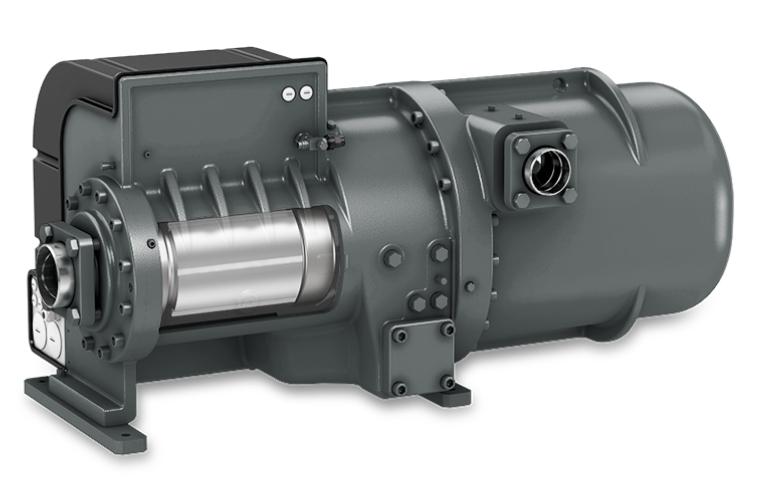
Welder Chiller Screw Compressor
What is the Working Principle of a Welder Chiller?
The working principle of a Welder Chiller is based on the circulation of the refrigerant through the distribution coils allowing expansion and condensation, which results in absorbing and dissipating heat.
The absorbed heat is used in evaporation, and the dissipated heat is thrown off to the environment through the exchange in the cooling tower.
As the refrigerant and the chilled water flow through the system, they allow a maximum heat exchange due to high-temperature differences. The greater the temperature difference, the greater will be the heat transfer.
In this way, all the heat from the equipment and the welding process is absorbed and later on dissipated to the environment.
What is the Purpose of Using a Welder Chiller in the Welding Process?
The purpose of using a Welder Chiller in welding is to get rid of the heat produced during the process.
As the surface of the material is welded, and the welding equipment comes in contact, an immense amount of heat is produced to allow the bonding of two surfaces together.
It helps in the prevention of the following factors:
Overheating of Equipment
The equipment is used for long hours and tends to heat up. Heated equipment provides sub-standard welding, and therefore it must be operated at the given temperature.
Breaking of Circuits Due to Overheated Wiring
Due to overheating, the wires tend to melt and break away the connection in the welding machines. It can also be overcome by removing the heat and using insulation.
Magnified Results
Amplified results are guaranteed when the temperature is maintained in a narrow range. Therefore precise temperature control is greatly responsible for the productivity of your application.
Comfortable Environment
The highly heated up environment in the welding industries can lead to poor health and disorientation of the laborers working there.
With good temperature regulation, you can obtain a comfortable environment to get the best out of the workers in the industry.
Which Industrial Processes Require a Welder Chiller?
Listed below are the names of the industrial processes that need the Welder Chiller for removal of heat and maximum productivity:
- Laser Marking
- Automobile Manufacturing Industry
- DC Welding Machine
- Security Door Processing Industry
- CO2 Laser
- Laser Cutting
- Laser Welding
- Laser Drilling
- Semiconductor Laser Processing Equipment
- YAG Laser
- Steel Structure Manufacturing Industry
- Gas Shielded Welding Applications
- Arc Welding Machine
What are the Protective Measures of a Welder Chiller in the Winter Season?
By taking suitable protective measures, you can obtain higher efficiency and long life of your Welder Chiller in winter. Some of these are given below:
Water Level Alarm
It helps detect reserved and circulating water levels in the storage tank and the pipes. The maintenance of the right calibration level is crucial for maximum productivity.
It displays the water level digitally, and the alarm is activated when the water level falls below the set value.
Refrigerant Level Indicators
Sensitive indicators inside the refrigerant coils detect the lower level to be recharged promptly.
Thermostat
The thermostat in the central microprocessor unit is set at a definite value according to the application process. Any deviation from the set level is indicated through an alarm.
Insulation
The wires and all the connections are insulated with the help of a strong insulator like rubber or fiberglass. It protects the user and the detection of any excess cooling load.
Antifreeze
A good quality antifreeze plays an essential role in places with shallow temperatures. It is most useful in winter.
Glycol Water Mixture
A mixture of glycol and water in the cooling tank provides higher efficiency since glycol acts as a good antifreeze and allows better flow.
Trained Operator
It is best to only allow a trained operator to use the Welder Chiller. All the values shall be set according to the welding process.
Others
- The chiller needs to run 24 hours a day, even in an extreme environment.
- The recirculation status of water shall be monitored for added protection because circulating water prevents it from freezing.
- After every use, especially in laser welding, ensure all the water from the laser head shall be recorded entirely, so there is no freezing in the valves and fittings.
- Dilute the antifreeze before using it because it contains corrosive ingredients.

Welder Chiller Thermostat
What is the Temperature Protection Mechanism of a Welder Chiller?
The temperature protection mechanism has the objective of monitoring temperature regulation.
It prevents the freezing of chilled water, which is being circulated in the system.
The basis of the mechanism is to drop the freezing temperature for a short period before shutting down the cooling system.
The system is well adapted to the changing temperatures and therefore keeps the temperature and flow rate of the circulating water stable.
What are the Industrial Applications of a Welder Chiller?
The main industrial applications of a Welder Chiller other than welding are stated below:
- Laser Cutting Machines
- Laser Drilling
- Semiconductor Laser
- Laser Marking
Different types of welders and welding machines are connected to a Welder Chiller to get cool temperatures to increase the process efficiency. These welding machines include:
- Induction Welding Machines
- Spot Welding Machines
- GTAW Welding Machines
- TIG Welding Machines
- MIG Welding Machines
- Electro-Slag Machines
- Automotive industry machines
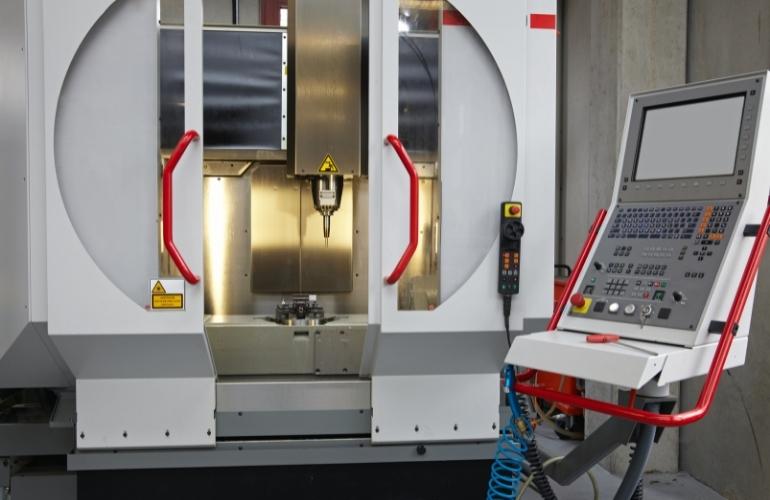
Welder Chiller Applications
What is the Difference Between an Air Cooled and a Water Cooled Welder Chiller?
The difference between an air cooled and water cooled Welder Chiller is based on the coolant being used in the refrigeration cycle.
Air Cooled
It utilizes the ambient air currents and shielding gas to remove excessive heat dissipated from the welding torch.
It is much more efficient and requires less assembly space. The cold air currents take up heat from the system through the refrigerant, which flows through the condenser coils.
Then this air is either recirculated back into the system, or the heat is vented to the environment directly.
There is no need for a cooling tower, but it shall be installed outside to capture more air currents. It has a minor assembly.
Water Cooled
The excessive heat is removed through recirculating water. A thin power cable is used by the water cooled welding torch. However, it requires higher maintenance as compared to the air cooled type.
The efficiency is high, but it requires an extensive network of pipes for adequate flow through the system.
The cooling tower is an essential component, and it must be installed at a site with a steady water supply.
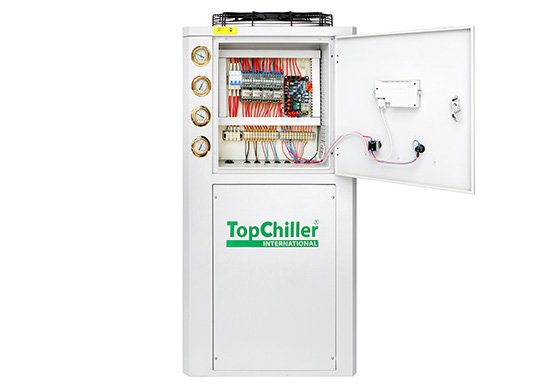
Air Cooled Welder Chiller
What are the Excellent Advantages of a Welder Chiller for your Industry?
The most important advantages of a Welder Chiller are as follows:
- You can obtain higher energy with little investment in terms of maintenance and installation.
- The function is cost-effective and does not require high bills.
- There is less chance of mushroom tips and irregular spots from the defective welding.
- The power supply and transformers are well protected.
- It ensures high efficiency and slight vibration and noise.
Other advantages include:
Protection of Equipment
It absorbs the excessive heat from the welding process, reducing the overheating, thus protecting the equipment from the unreasonable load.
Low Sound and Vibration
All the parts in direct contact are well lubricated, and therefore there is no friction. The design is smooth, and supreme quality components are used, leading to smooth function.
No vibration or sound is making the environment comfortable to work in.
Efficient Heat Transfer
Due to the use of primarily closed-loop circulation, chilled water is used for maximum transfer of heat. More significant the temperature difference, the better the heat transfer.
Low Power Consumption
Although it requires a stable and steady energy supply, it doesn’t take much energy while operating.
Therefore the electricity bills are reasonable. You can also use batteries or generators for power sources.
Low Consumption of Refrigerant
High-quality refrigerants must be used for maximum efficiency and higher reliability. If there is no leakage in the system, it may last for many years, reducing the maintenance cost of the refrigerant.
Long Life and Reliability
The components, refrigerant, and distribution system are guaranteed supreme quality, ensuring minimum maintenance and longer life.
High Cooling Capacity
It provides an extensive range of cooling capacities according to the extent of your welding process. Ranging from 1 ton to 50 tons, you can choose any capacity in between.
Customization
It is better to invest in a unit with the most suitable features for your application. With the help of the given brochure, you can select the size, model, capacity, and design.
Which Welding Processes Need a Welder Chiller to Remove Extra Heat?
Welding is a highly exothermic reaction that uses high temperature to change the physical state of the metal on which it is working.
Several processes produce an immense amount of heat that must be displaced by using a Welder Chiller:
Arc Welding
It works by producing an electric current between the material and the electric device, thus raising the temperature of both. If this heat is not removed timely, the best results cannot be obtained.
Gas Metal Arc Welding
The shielding gas and electrical gas are used in the gas metal arc welding. The excess heat is removed by using a Welder Chiller.
Flux-Cored Arc Welding
Due to continuous flux and high voltage, the system tends to heat up very soon. It requires uninterrupted feed for the electrode, which is very dangerous without using a chiller.
Gas Tungsten Arc Welding
The non-consumable tungsten electrode protects the shielding gas, but it still requires the function of a chiller.
What are the Types of Compressors Used for a Welder Chiller?
The type of compressors determines the capacity of the Welder Chiller, and therefore it must be selected wisely.
Scroll Compressors
It uses a field and an orbiting scroll for continuous refrigerant compression. It deals with average cooling loads such as small industries and processes where welding is necessary.
Screw Compressor
It is also known as the rotary compressor. It utilizes two rotors to move the refrigerant from very low to very high.
The screws or rotors lock the compressed gas in a confined area. It works best for applications with medium cooling loads.
Centrifugal Compressor
Centrifugal force is used in this compressor to compress the refrigerated vapor. It deals with moderate to large cooling loads such as large industries that require continuous welding.
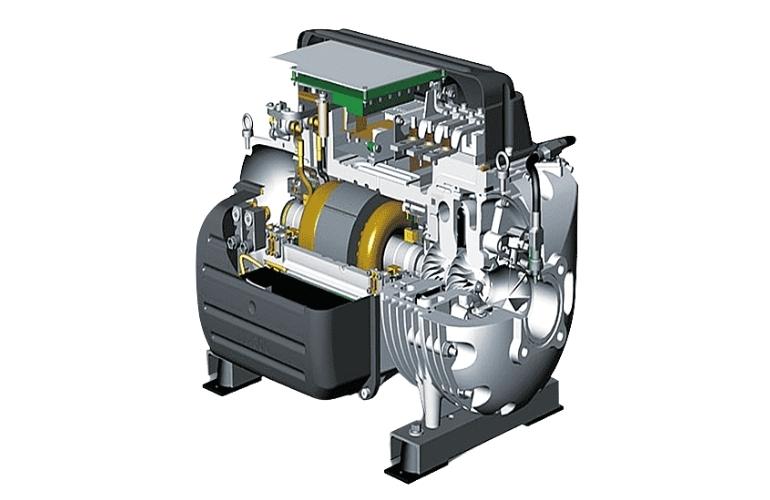
Welder Chiller Centrifugal Compressor
What is the Capacity of a Welder Chiller?
The capacity of a Welder Chiller means the ability of a chiller to produce cooling and eliminate heat from a process.
It depends upon the compressor being used, the number of compressors, and the cooling load of the application.
- The portable type of Welder Chiller has a capacity range of 1 ton to 30 tons.
- For more significant structures, the capacity range is mostly 40, 50, and 60.
- Modular type falls in the category of greater than 60 tons.
What are the Accessories Used for a Welder Chiller?
The accessories used in a Welder Chiller are stated below:
VFDs
Variable frequency drives, abbreviated as VFDs, are used to control the chiller’s electricity supply.
Variable frequencies hitting the chiller can be damaging and must be eliminated.
Motor
A good quality motor shall be used for propelling the refrigerant through the coils and better movements of water.
Low power motors are preferred so that the function of the chiller stays cost effective.
Filter Drier
Whether the water is treated or not, using a filter is necessary to remove any contamination from entering the system. These contaminants tend to pile up and cause obstruction.
A filter traps all the unwanted contaminants and prevents the accumulation in the coils. However, it must be cleaned and replaced timely.
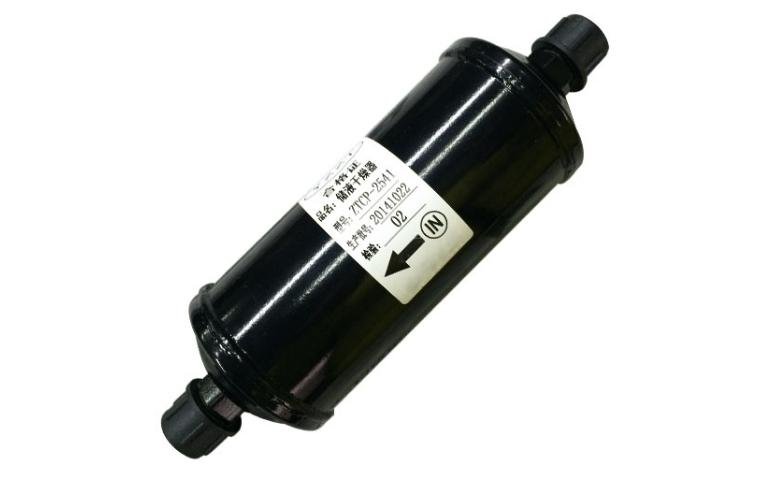
Welder Chiller Filter Drier
What are the Safety Requirements of your Welder Chiller?
The most common safety requirements of all types of a Welder Chiller include safety devices and some practices that help stay safe.
Some of the safety devices include:
- Automatic Water Refilling System
- Water Free Safety System
You can protect your system from being damaged with the help of proper maintenance services that include:
- Examine the compressor oil
- Monitor the loops of condenser water
- Check for refrigerant leakage
- Maintaining daily logs of the maintenance routine
- Keep the tubes and coils clean
- Reduce the condenser water temperature
- Maintain the flow rate of chilled water
- Install variable speed drives
- High refrigerant safety
- Low refrigerant safety
- Safety switch for low water flow
- Digital temperature controller
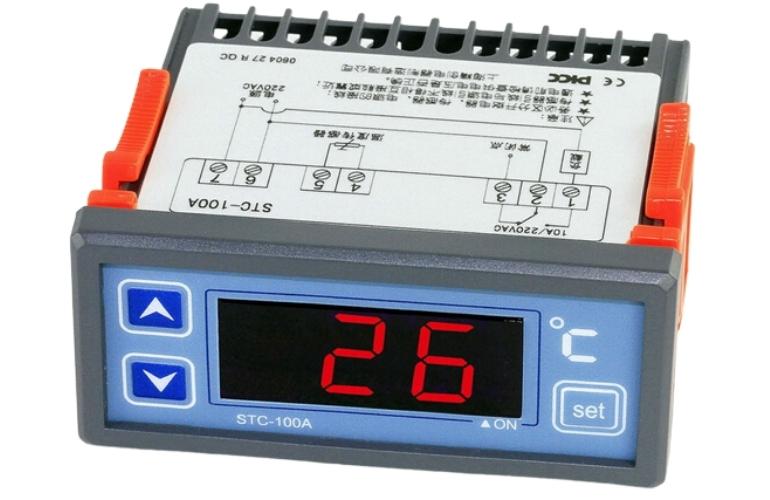
Welder Chiller Digital Temperature Controller
Digital Water Controller
Digital technology has taken control of the control panel. A digital controller displays the controlled readings control and monitors the water.
Low Water Level Safety System
Water levels can be monitored in a Welder Chiller by using a safety system. This safety system warns about low water levels to protect the damage and insufficient cooling efficiency.
Stainless Steel Brazed Plate Condenser
A brazed plate condenser is the recent technology used in Welder Chiller specifically to protect the damage from excessive heat generated in the welding process.
How to Increase the Efficiency of your Welder Chiller by Maintenance?
You can increase the efficiency of your Welder Chiller through a good maintenance routine that must be carried out bi-annually or annually.
- Register the observations and performance of your chiller with each inspection. It helps assess the efficiency, which can be compared later.
- It is essential to carry out a detailed inspection after six months and one year.
- All the pipes and the water tank shall be checked for any growth of algae and bacteria which might clog up the pipe.
- The filters shall be cleaned and replaced after every few months.
- All the wires shall be well insulated for maximum protection.
- Check for any leakage to ensure that the refrigerant is not wasted from the leaky distribution system.
- Lubrication of all components must be done to make sure that there is minimum friction and smooth function.
- The refrigerant and oil level shall be maintained. Lower levels can damage the system and affect the frequency.
- See if there are any damages to the system. Replace the components as soon as possible.
- Keep a check on the water line chemical dosing. The correct quantity and good quality of refrigerants are significant.
- Monitor, the control and safety devices to see if they function correctly.
- The proper installation of the side panels is vital.
- A historical record must be maintained to keep the history.
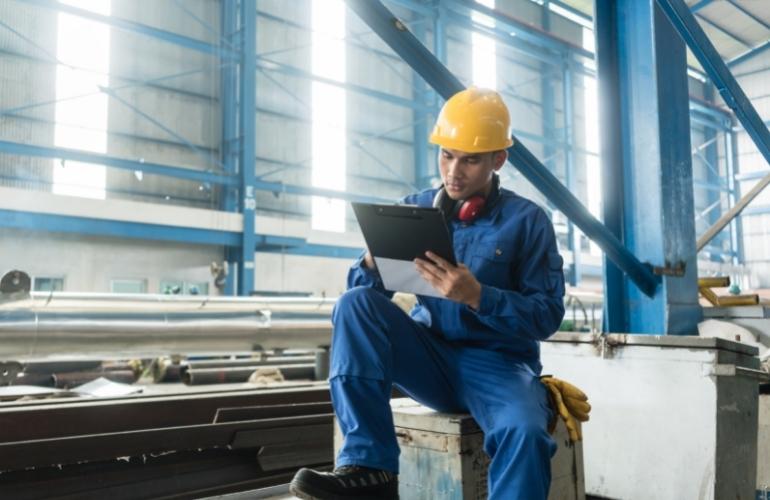
Register the Performance of your Welder Chiller with Each Inspection
How to Troubleshoot Problems of your Welder Chiller?
It is crucial to deal with a problem as soon as it arises to prevent long-term damage to the central system. The potential problems and their solutions are listed below:
- Power Failure
- Decreased frequency
- Low voltage
- Phase difference
- Faulty wiring
- The main switch turned off
- Tripped circuit
- Burnt fuse
Solution
- Maintain a steady supply of electricity
- Use a stabilizer for maintenance of electricity
- Use good quality wiring and insulate them for added protection.
- Check if the main switch is turned on
- Replace the faulty fuse
- Check if the circuit is complete and closed
- Obstructed Ducts
- Poor quality of water
- Growth of bacteria and algae
- Faulty valves
- Accumulation of dirt and debris
Solution
- Replace the filters
- Install new valves
- Clean the filters
- Use a vacuum to clean the ducts
- Use a good quality disinfectant
- Treat the water before using it for Welder Chiller
- Low Efficiency
- Poor quality refrigerant
- Low level of refrigerant
- Reduced lubrication
- Defective components
- Low capacity compressor
- Leaky distribution system
Solution
- Only use a good quality refrigerant that is user friendly and environment friendly
- Maintain the level of refrigerant and oil
- Check and replace any damaged component
- Seal the leaks if any
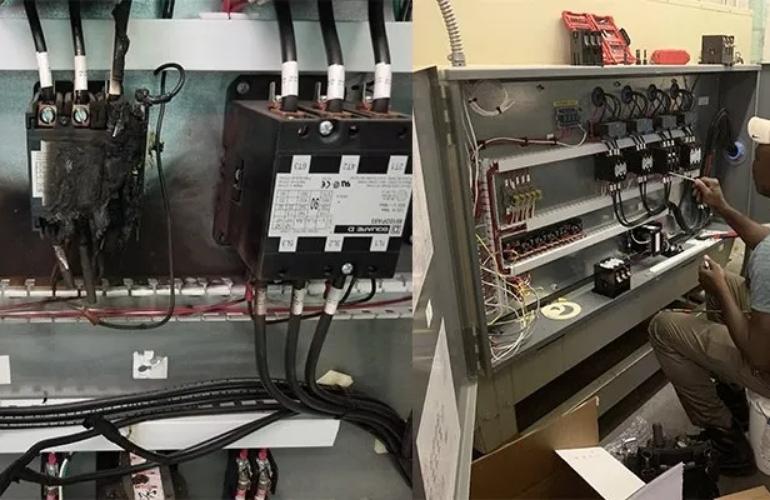
Welder Chiller Troubleshooting
